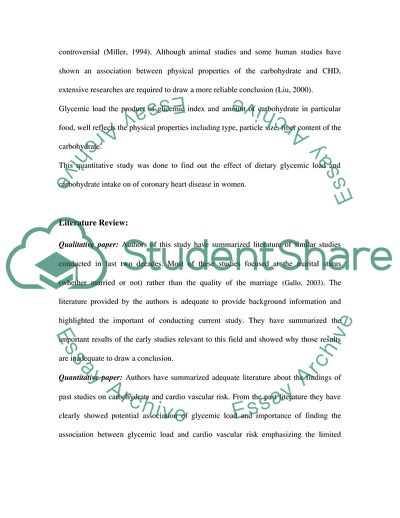Cite this document
(Influence of Marital Status and Quantity of Carbohydrate Consumption on Cardiovascular Risk in Women Research Paper Example | Topics and Well Written Essays - 2000 words, n.d.)
Influence of Marital Status and Quantity of Carbohydrate Consumption on Cardiovascular Risk in Women Research Paper Example | Topics and Well Written Essays - 2000 words. https://studentshare.org/health-sciences-medicine/1740468-research-method
Influence of Marital Status and Quantity of Carbohydrate Consumption on Cardiovascular Risk in Women Research Paper Example | Topics and Well Written Essays - 2000 words. https://studentshare.org/health-sciences-medicine/1740468-research-method
(Influence of Marital Status and Quantity of Carbohydrate Consumption on Cardiovascular Risk in Women Research Paper Example | Topics and Well Written Essays - 2000 Words)
Influence of Marital Status and Quantity of Carbohydrate Consumption on Cardiovascular Risk in Women Research Paper Example | Topics and Well Written Essays - 2000 Words. https://studentshare.org/health-sciences-medicine/1740468-research-method.
Influence of Marital Status and Quantity of Carbohydrate Consumption on Cardiovascular Risk in Women Research Paper Example | Topics and Well Written Essays - 2000 Words. https://studentshare.org/health-sciences-medicine/1740468-research-method.
“Influence of Marital Status and Quantity of Carbohydrate Consumption on Cardiovascular Risk in Women Research Paper Example | Topics and Well Written Essays - 2000 Words”. https://studentshare.org/health-sciences-medicine/1740468-research-method.


